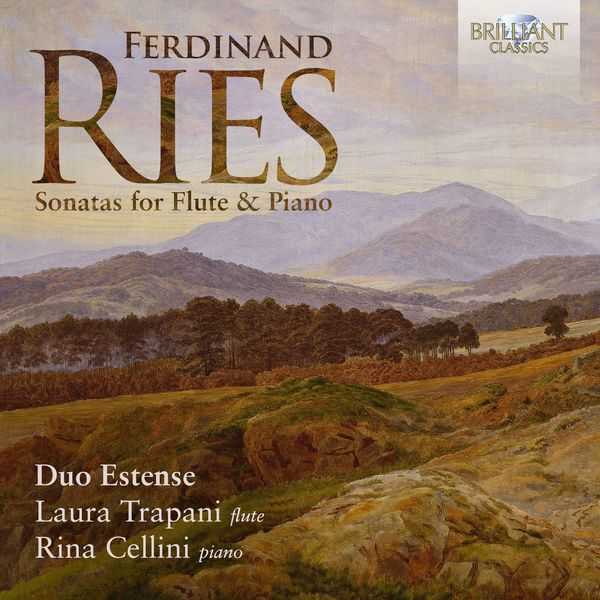

Composer: Ferdinand Ries
Performer: Duo Estense, Laura Trapani, Rina Cellini
Format: FLAC (tracks)
Label: Brilliant Classics
Catalogue: 96132
Release: 2022
Size: 1.21 GB
Recovery: +3%
Scan: cover
Sonata sentimentale in E-Flat Major, Op. 169
01. I. Allegro Moderato
02. II. Adagio con Moto
03. III. Rondo. Allegro
Sonata No. 1 in E-Flat Major, Op. 86
04. I. Allegro
05. II. Andante
06. Rondo. Allegro
Sonata No. 2 in D Major, Op. 86
07. I. Allegro con Brio
08. II. Romance. Andante
09. III. Rondo. Allegro
Sonata No. 3 in B-Flat Major, Op. 86
10. I. Allegro non Troppo
11. II. Larghetto
12. III. Rondo. Allegretto
Sonatina for Pianoforte No. 1 in B-Flat Major, Op. 5
13. I. Allegro ma non Troppo
14. II. Andantino
15. III. Rondo. Allegretto
Sonatina for Pianoforte No. 2 in F Major, Op. 5
16. I. Allegro non Troppo
17. II. Andantino
18. III. Rondo. Allegretto Vivace
Ferdinand Ries (1784-1838) was born in Bonn and moved to Vienna in 1801, where his life became closely related to that of Ludwig van Beethoven (also a native of Bonn…). Ries studied piano with him, copied his scores and was the interpreter of several new works, notably the premiere of the Third Piano Concerto. Ries also wrote the first biography of Beethoven, an invaluable source of first-hand information. Ries’ style inevitably is modelled on that of his master Beethoven, he was however strong enough to stand on his own.
The figure of Ferdinand Ries (1784–1838) enjoys a peripheral familiarity among music-lovers as the friend and amanuensis of Beethoven. A bond had formed when Ries’s father Franz taught Beethoven in Bonn. While Beethoven doubtless cast his eye over his friend and student’s pieces from time to time, he sent Ries to his own teacher Johann Albrechtsberger for lessons in composition.
The Sonata sentimentale appears to mark the high-point of the composer’s writing for the flute, which extended to several “earlier”-sounding sonatas and lighter fantasias as well as flute-centric chamber music such as six Quartets for Flute and String Trio. Here, to a degree unprecedented in the rest of his work, the flautist is the star of the show.
The three Sonatas Op. 86, on the other hand, are evidently designed for performers of more modest talents: “Sonates faciles” as they were designated on the title page of their first publication in 1839. This set dates with fair certainty from London in 1819, and Ries appears to have composed it with the profitable market of proficient amateurs in mind.
According to manuscript dates the Sonatinas Op. 5 were the last works on this album to be composed, in London in 1821, published two years later there by Muzio Clementi. The rippling “Alberti bass” sequences in the left hand, the preponderance of moderate tempi and straightforward two- and three-part textures, lying well under the fingers, indicate that Ries had in mind the same public market for these attractively sunny pieces as the Op. 86 Sonatas.